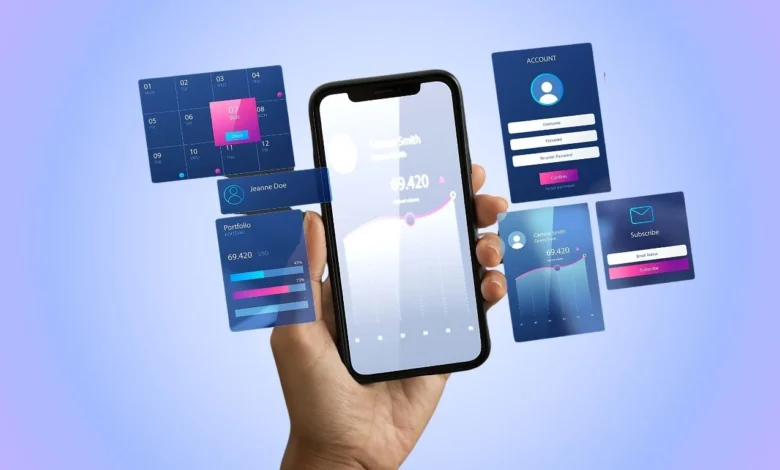How Mobile App Personalization Drives Engagement

Users nowadays expect more than functionality from their mobile applications—they demand relevance. With thousands of apps available across app stores, users are quick to uninstall anything that doesn’t offer immediate value. This is where mobile app personalization becomes a game-changer.
Mobile app personalization tailors the user experience to individual preferences, behaviors, and demographics. It significantly boosts user engagement, retention, and satisfaction when done right.
This blog will explore how mobile app personalization works, why it matters, the techniques involved, and real-world examples of brands that have successfully implemented it.
What Is Mobile App Personalization?
Mobile app personalization refers to customizing a mobile app’s content, layout, and functionality based on individual user data. This data could include user location, app usage behavior, purchase history, browsing patterns, device type, and even time of day.
The goal is to provide each user a unique, relevant, and engaging experience. Instead of a one-size-fits-all interface, personalization makes apps more intuitive, efficient, and enjoyable to use, keeping users returning for more.
Why Mobile App Personalization Matters
With average app retention rates dropping to 25% after 30 days, retaining users is a significant challenge. Mobile app personalization directly addresses this by making users feel understood and valued.
Key Benefits of Mobile App Personalization:
- Enhanced User Engagement: Personalized recommendations, targeted messages, and customized content keep users hooked, increasing session times and in-app activity.
- Improved Retention Rates: Users are more likely to continue using an app that evolves with their preferences and offers tailored experiences.
- Increased Conversions: Whether it’s making a purchase, signing up for a newsletter, or completing a game level, personalization boosts conversion rates by delivering timely and relevant prompts.
- Higher Customer Satisfaction: When users feel an app “gets them,” they’re likelier to leave positive reviews and recommend it to others.
Key Techniques Used in Mobile App Personalization
Achieving successful mobile app personalization involves a combination of data analytics, AI, and UX design. Here are the most common personalization techniques:
1. Behavior-Based Personalization
This involves tracking how users interact with your app. For instance, a news app might analyze reading history to recommend articles on preferred topics. Over time, this behavior-based approach refines the user experience continuously.
2. Location-Based Personalization
Using GPS or IP-based data, apps can offer location-specific content. For example, a food delivery app may suggest nearby restaurants or show estimated delivery times based on the user’s address.
3. Push Notification Customization
Generic push notifications often get ignored. Personalized push alerts, based on user activity or preferences, see much higher open and conversion rates. These could include personalized discount codes, reminders about incomplete tasks, or new content in categories the user enjoys.
4. Onboarding Personalization
First impressions matter. Tailoring the onboarding experience based on user inputs (like age, interests, or goals) ensures the app starts off on the right foot. For example, a fitness app might create a personalized workout plan based on a short quiz at signup.
5. In-App Messaging
Customized in-app messages provide contextual support, tips, and offers based on user behavior. Unlike push notifications, they appear while the user is actively engaged, making them more effective.
6. AI-Powered Recommendations
Apps like Netflix, Spotify, and Amazon have set a gold standard in this area. Machine learning models analyze past behavior to offer highly accurate content or product suggestions, driving both engagement and revenue.
How Mobile App Personalization Improves Engagement Metrics
Let’s break down how mobile app personalization affects key engagement KPIs:
- Session Length: Personalized content encourages longer in-app sessions by reducing the time users spend searching for what they want.
- Frequency of Use: Tailored experiences make users more likely to open the app frequently.
- In-App Purchases: Personalized offers and product recommendations lead to higher transaction values.
- User Retention: When users receive ongoing value that’s tailored to them, they’re less likely to churn.
These improvements aren’t just theoretical—numerous case studies prove the impact of personalization on engagement metrics.
Real-World Examples of Mobile App Personalization
1. Spotify
Spotify’s personalization features are central to its success. From curated playlists like “Discover Weekly” to personalized homepage carousels, the app continuously adapts to individual music tastes.
2. Amazon Shopping App
Amazon leverages mobile app personalization through recommended products, personalized deals, and reminders based on browsing history.
3. Nike Training Club
This fitness app asks users about their goals, fitness levels, and preferred workout styles. Based on this data, it offers custom training plans and tracks progress over time.
Best Practices for Effective Mobile App Personalization
While the benefits are clear, personalization must be implemented thoughtfully to avoid being intrusive or creepy. Here are some best practices:
1. Respect User Privacy
Be transparent about what data you collect and why. Ensure compliance with privacy regulations like GDPR and provide opt-in/opt-out options.
2. Keep It Relevant, Not Overwhelming
Personalization should enhance, not clutter, the user experience. Avoid over-customizing to the point of confusion or annoyance.
3. Test and Optimize Constantly
Use A/B testing to identify which personalized features drive the most engagement. What works for one segment may not work for another.
4. Use Data Responsibly
Make sure the algorithms you use don’t reinforce biases or offer irrelevant recommendations. Continuous model training and human oversight are crucial.
5. Integrate Across Touchpoints
Personalization shouldn’t be limited to one part of the app. A seamless, cross-functional, personalized journey—from onboarding to checkout—creates a consistent and engaging experience.
Challenges in Mobile App Personalization
Despite its advantages, mobile app personalization comes with some hurdles:
- Data Collection Barriers: Users are becoming more cautious about sharing data. Striking the right balance between personalization and privacy is critical.
- Technical Complexity: Implementing personalization engines requires a robust backend, AI integration, and data infrastructure.
- Scalability: Personalizing at scale, especially for apps with millions of users, can be challenging without efficient algorithms and cloud resources.
The Future of Mobile App Personalization
As AI and machine learning continue to evolve, so will the sophistication of mobile app personalization. We can expect:
- Hyper-Personalization: Apps will predict needs before users express them, like suggesting an umbrella when it’s about to rain based on weather and commute data.
- Voice and Conversational Interfaces: Personalized voice assistants and chatbots will play a larger role in user engagement.
- Cross-Device Personalization: A seamless experience across smartphones, tablets, wearables, and smart TVs will become the new standard.
Final Thoughts
Mobile app personalization is no longer optional—it’s essential for staying competitive in a crowded marketplace. From increasing user engagement and boosting retention to driving conversions and satisfaction, personalization is a powerful tool that puts the user at the center of the experience.
To succeed, app developers and marketers must invest in the right tools, respect user privacy, and commit to a strategy of continuous learning and optimization. When done correctly, mobile app personalization not only meets user expectations but exceeds them, turning casual users into loyal brand advocates.
Looking to boost your app engagement through personalization? Nudge helps you effortlessly integrate AI-driven personalization into your mobile app, offering real-time, 1:1 experiences that resonate with each user.
Book a demo today to discover how Nudge can help you boost mobile app engagement through powerful personalization.




